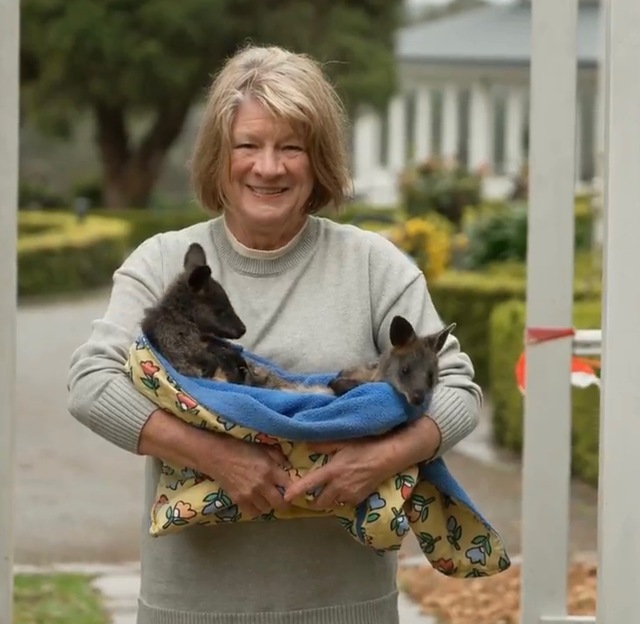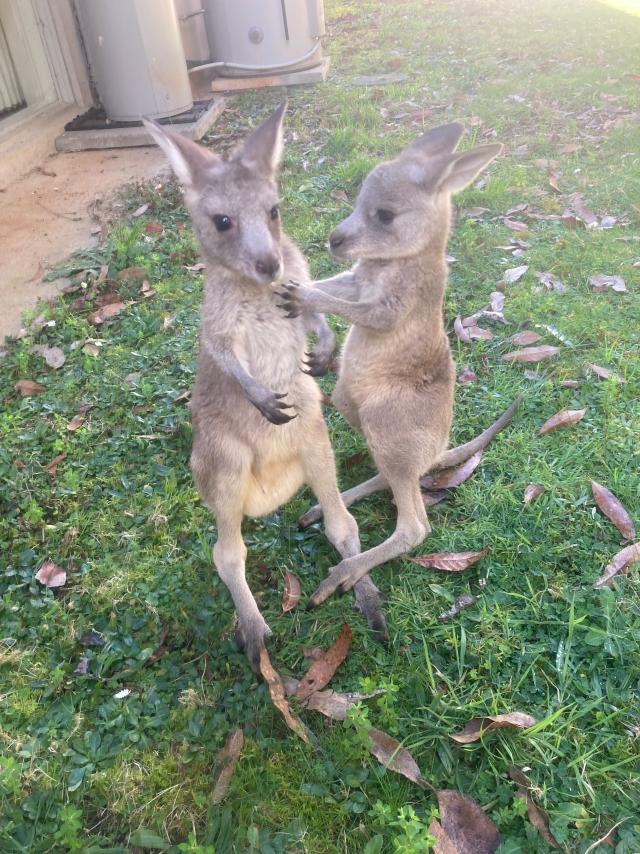
By Shamsiya Hussainpoor
The Emerald Monbulk Wildlife Shelter has received a $2000 boost from Australia Post’s People of Post Grants program, helping the long-standing shelter improve the way it cares for orphaned joeys and other native animals.
Founded and run by Carolyn Seegar for more than 35 years, the shelter sits between the towns of Emerald and Monbulk in Victoria’s Dandenong Ranges.
The grant will go towards purchasing metal storage bins and silicone teats, small but essential items that play a big role in the safe feeding and rehabilitation of rescued wildlife.
“This is for joey feed, or problem feed,” Ms Seegar.
“I’ve had mice and rats eat through plastic, so that was no good. I’ve got 44-gallon drums, but people tend to leave the lids off them. This makes sure that no rats or mice can get into it. It’ll be more secure.”
The metal storage bins will protect animal feed from pests and contamination, while the silicone teats, used to feed joeys – are crucial to avoid injury or illness.
“I would spend about $2000 a year on teats because the animals tend to bite the ends off them all the time, and they’re about $7 each,” Ms Seegar said.
“As soon as the holes get too big, the animals can aspirate, so I have to throw them out. As soon as the holes get a little bit larger, which happens very quickly, they become dangerous.”
But more than convenience, it’s about keeping vulnerable animals safe from disease.
“The big thing is rats or mice getting into it. The animals can get sick from salmonella, from the poo or the wee from the rats. It can kill them. So I have to make sure it’s pretty clean.”
The People of Post Grants are designed to support projects that matter to Australia Post employees and that align with four key focus areas: mental health, disaster support and resilience, Indigenous children’s literacy and learning, and environment and sustainability.
While Ms Seegar wasn’t involved in the application herself, the grant was made possible thanks to one of her volunteers, who also works at Australia Post.
“One of the girls who works here told me about it. She actually made my website, because she works at Australia Post, and she told me about it. That’s the only reason I knew about it,” she said.
Running the shelter is an enormous undertaking, with Ms Seegar caring for a wide range of animals including kangaroos, wallabies, wombats, echidnas, sugar gliders, birds, and even the occasional rescued horse or alpaca, all without government funding.
“I’ve had no sleep because I’ve had these tiny little pinky joeys. I got three in yesterday. I already had a couple, and they have to be fed every three and a half hours,” she said.
“I’m absolutely buggered to tell you the truth.”
On average, Ms Seegar spends close to $2000 a month on feeding alone. While she receives community support, including donations and help from the local Bendigo Bank branch in Monbulk, every bit helps.
“The feed bill would be the most help I could get,” she said.
“But we went for something that was more practical, like a natural thing, rather than just food.”
Emerald Monbulk Wildlife Shelter is well-known throughout the Hills community, with many locals bypassing official wildlife rescue lines to contact Ms Seegar directly when they find an injured animal.
“I think I’m so well known that people know what I do. Nearly every day I get an animal,” she said.
“Everybody in the Hills has probably brought me an animal at some point.”
Ms Seegar also recently received a $2000 donation from the local Rotary Club, which she plans to use to build a new aviary to meet the growing demand for bird rescues.
For anyone wanting to support the shelter, donations can be made via the Emerald Monbulk Wildlife Shelter Facebook page, where banking details are listed.
“It is very expensive,” Ms Seegar said.
“The amount of traffic in the Hills has gone up so much. Now it’s bumper to bumper. That means more roadkill, and when people check the pouches, they find the babies, and then I get them. It never stops.”







